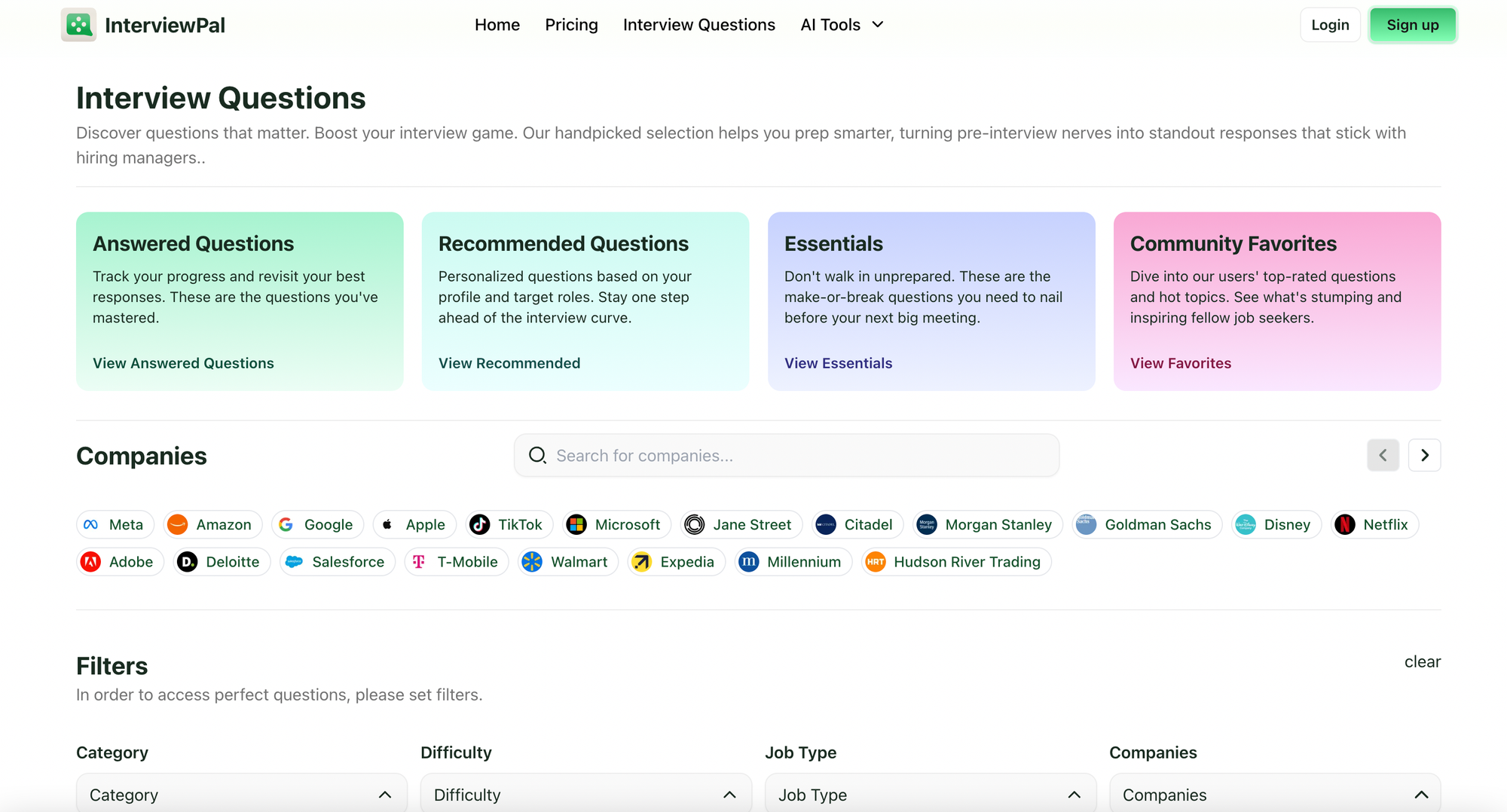Let's get real for a minute: behavioral interviews can feel like trying to solve a Rubik's cube blindfolded – tricky, nerve-wracking, and sometimes downright impossible. But here's the thing: they don't have to be.
I've spent years helping professionals pivot their careers and nail those make-or-break interviews, and I'm here to tell you that mastering behavioral interviews is totally within your reach. So grab your favorite beverage, get comfy, and let's dive into the exact strategies that will help you show up as your most authentic, compelling self.
The Truth About Behavioral Interviews (That Nobody Tells You)
Here's what most career guides get wrong: they treat behavioral interviews like a memory game, where you just need to memorize the "right" answers. But here's the real tea: behavioral interviews are actually your chance to be the author of your own professional story. They're not about perfect answers – they're about perfect storytelling.
The Hidden Psychology Behind Behavioral Questions
Before we dive into the tactical stuff, let's reframe how we think about behavioral interviews:
- They're not interrogations; they're conversations
- They're not tests; they're storytelling opportunities
- They're not about proving yourself; they're about sharing your journey
Frameworks That Actually Work
1. The STAR Method (With a Twist!)
Yes, you've probably heard of STAR (Situation, Task, Action, Result), but let's add some sparkle to make it truly powerful:
Situation: Set the scene with vivid (but concise) details
Example: "During my Target team's peak season last year, we faced an unexpected 40% surge in customer support tickets while two team members were on medical leave."
Task: Make it personal and specific
Example: "As the senior support specialist, I needed to prevent our response times from dropping below our 4-hour guarantee while maintaining our 86% satisfaction rate."
Action: Show your thought process and leadership
Example: "I implemented a three-part solution: First, I created a priority matrix to triage tickets. Then, I developed quick-reference guides for our most common issues, reducing resolution time by 35%. Finally, I coordinated with our engineering team to automate responses for status update requests."
Result: Quantify and humanize
Example: "We maintained our 4-hour response time, achieved a 92% satisfaction rate, and the quick-reference guides became a permanent part of our onboarding process, reducing training time by 30%."
2. The PIE Framework (Problem, Impact, Evolution)
This is my secret sauce for those particularly challenging questions about failure or growth:
Problem: Acknowledge the challenge honestly
Impact: Share what was at stake
Evolution: Show how you grew and what you'd do differently
3. The Values-First Approach
Here's a game-changer: Before your interview, identify the company's top 3-5 values. Then, structure your stories to highlight these values in action.
Let's Break It Down Role by Role:
Scenario 1: Leadership & Influence
Question: "Tell me about a time when you had to influence someone without formal authority."
Strong Answer Structure:
- Context setting (10 seconds)
- Stakes identification (15 seconds)
- Action sequence (45 seconds)
- Results and learning (20 seconds)
Example Response: "In my role as a project coordinator at TechStart, I identified an opportunity to reduce our sprint planning time by 30%. Though I wasn't a team lead, I knew this could save our team 5 hours each week. [Context]
The challenge was that our senior developers were attached to their current process, which they'd been using for three years. [Stakes]
I approached this by first spending two weeks documenting our current process and identifying bottlenecks. Then, I created a small pilot with two willing developers to test my proposed changes. We documented the results and created a compelling presentation comparing the old and new methods. [Action]
After presenting the data, the entire team voted to adopt the new process, which ended up saving us 6 hours weekly – more than initially projected. The experience taught me that influence comes from evidence and inclusion, not authority. [Result]"
Scenario 2: Handling Conflict
Question: "Describe a situation where you had to deal with a difficult teammate at your last company."
Pro Tip: This is where most candidates shoot themselves in the foot by being too negative. Here's how to nail it:
- Start with empathy
- Focus on resolution, not conflict
- Demonstrate emotional intelligence
- Show lasting positive impact
Scenario 3: Problem-Solving Under Pressure
Question: "Tell me about a time when you had to make a difficult decision with limited information."
The secret sauce here is showing your decision-making framework:
- Outline the constraints
- Share your analysis process
- Explain how you mitigated risks
- Reflect on the outcome
Because Good Isn't Good Enough Right?

The Callback Technique
Reference earlier stories when answering later questions to show consistency and build a stronger narrative.
The Perspective Shift
Tell your story from multiple stakeholders' viewpoints to demonstrate emotional intelligence.
The Future Framework
End stories by connecting past experiences to future applications at the target company.
Oops, Don't Do That (And Quick Fixes...)
- The Rambler's Trap
- Solution: Use the 2-Minute Rule – no story should take longer than 2 minutes
- Practice with a timer
- The Humble Fumble
- Solution: Own your achievements while acknowledging team contributions
- Use "we" for team successes, "I" for personal actions
- The Detail Dilemma
- Solution: Follow the 60/40 rule – 60% context/action, 40% results/reflection
- Focus on transferable insights
How AI Is Revolutionizing Interview Prep
Look, we've all been there – practicing interviews in front of the mirror, recording ourselves on our phones, or roping in that one patient friend to help us prepare. But here's the thing: the interview landscape has evolved, and so should your preparation methods.
This is where InterviewPal comes in as your secret weapon. Think of it as having a personal interview coach in your pocket, available 24/7. The platform isn't just another question bank – it's your comprehensive behavioral interview preparation partner.
Why InterviewPal Is a Game-Changer
- Real Questions, Real Companies: Practice with actual behavioral questions used by top firms like Google, Amazon, and Goldman Sachs
- Role-Specific Practice: Whether you're in tech, finance, marketing, or healthcare, get questions tailored to your field
- AI-Powered Feedback: Receive instant, actionable feedback to refine your responses
- Progress Tracking: Monitor your improvement over time and identify areas for growth
Getting Started with InterviewPal
- Sign up for pro at just $10/month (less than your favorite streaming service!)
- Choose your industry and role
- Start practicing with our AI-powered mock interviews
- Review feedback and track your progress
- Ace your real interviews with confidence
The Night-Before Checklist
- Practice with InterviewPal's Behavioral Question Bank
- Record and review your responses
- Incorporate AI feedback
- Do at least 3 full mock interviews
- Review company values and align your stories
- Get a good night's sleep before the big day
Your Next Steps...
Remember, behavioral interviews are your chance to shine, to share your unique professional journey, and to show potential employers not just what you've done, but who you are as a professional.
Ready to take your interview prep to the next level? Head over to InterviewPal and start your journey toward interview mastery. Your future self will thank you!
Read our article: The Ultimate Cheat Sheet for Behavioral Interviews at Top Tech Companies
Want more interview insights and career pivot strategies? Follow us here..



